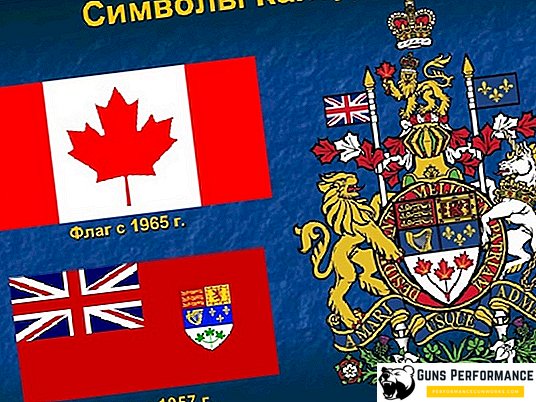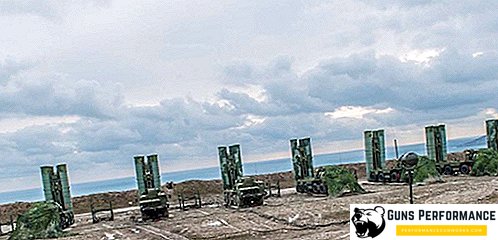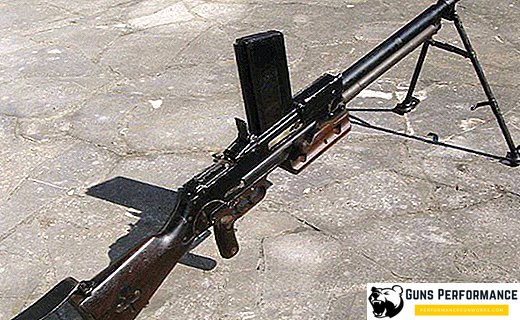Canada is one of the few states on the political map of the world where talented and impartial people have been in power throughout the entire history of the statehood. This is quite a rare phenomenon in world practice, but it is Canada that is a model of a successful system of government in action. Despite its independence, Canada is a federal state entity with the dominion of the British Commonwealth of Nations. In other words, Canada is a constitutional monarchy, where the full power of the supreme power is in the hands of the Queen of Great Britain. In fact, the government of the state is occupied by the Prime Minister of Canada, whose status and powers go far beyond the nominal head of government.

Canadian government
It should be noted that as a British colony, Canada gained its independence through lengthy constitutional changes. Another part of the North American British colonies - the current United States of America - gained sovereignty as a result of a bloody war of independence. Despite the difference in the way of gaining sovereignty with its southern neighbor, the federation of Canadian provinces is a sovereign and independent state, with its government and parliament.

The country's constitution is not a single legal act. The Basic Law is a collective notion in which all the most important codified laws and agreements, based on the British system of traditional law, are united. The main document regulating the existence of the state is the 1982 Act of Canada. This document finally defined the legal boundaries between the United Kingdom and Canada. Decrees and orders set out in the annex to the Act issued a complete repatriation of the Canadian constitution from the main body of laws of Great Britain. It is the Constitutional Act that determines the structure of government in the country, determines the powers of the government.
In this regard, the system of government in Canada is reminiscent of the work of the British state apparatus. those. nominally the head of state is the queen, and in fact all power is in the hands of the prime minister and parliament. The queen of the ocean is represented by the governor-general. The post of governor-general is more like a police officer, since his goals and objectives are to exercise control over the observance and preservation of the institutions of royal power in the country. On the sovereign right of the Canadian government to decide matters in the state at its discretion, it says that the person recommended by the Prime Minister of Canada is appointed by the Queen as governor-general.

On behalf of the Queen of Great Britain, the Governor-General commands the Canadian armed forces. In other words, the Governor-General of Canada performs the duties of a queen because of her absence. Executive power in the country is exercised by the Privy Council - the Canadian government, whose composition on behalf of the Queen is approved by the current Governor-General. All actions of ministers are carried out on behalf of Her Majesty, with the consent of the Governor-General.
As for the head of the Canadian government, the post of prime minister is an elected position held by the leader of the party that won the general parliamentary elections in the majority of seats in the House of Commons. The number of members of the House of Commons is constantly changing, after the next census. To date, their number is 338. The Senate - the upper house of parliament has a constant number of senators, who are appointed by the Queen at the suggestion of the current Prime Minister.
All cabinet members are mainly representatives of the party that won the parliamentary elections. The candidacy of each minister is approved by the Governor-General, after which they take an oath of allegiance to the Queen. The Prime Minister of Canada takes office in a festive atmosphere within the precincts of parliament, giving a solemn oath. From this point on, the prefix "Hon." Is added to the title of the Prime Minister.

A characteristic feature of the structure of government in Canada is an amendment to the federalization of the country. Each of the 10 Canadian provinces has its own parliament and an analogous federal government executive body - the cabinet of ministers. The head of the supreme local authority is the lieutenant-governor, who is the representative of the queen in the region. The provincial legislative sphere is under the jurisdiction of the Legislative Assembly, and all executive power is concentrated in the hands of the provincial prime minister.
The political component of the premiership in Canada
An important aspect in the history of government in Canada is the fact that all the prime ministers holding the post of head of government were representatives of two political parties: the liberal and the conservative.
The Liberal Party is one of the oldest social and political forces in the country. Founded the party back in 1867, during the existence of the Canadian Confederation. The peak of the popularity of the liberals in the country fell on the twentieth century. The dominant position of the liberals on the political Olympus of Canada is evidenced by victories in 17 general elections out of 27 held in the entire history of the Canadian state. The liberal party received the greatest influence in the country in the second half of the 20th century and continues to firmly hold its position.

The main competitors of the liberals have always been and there are conservatives who had strong positions in the political life of the country at its initial stage. The party was created on the basis of the Grand Coalition in 1864, which included conservatives and reformists who advocated the creation of a broad Canadian confederation. Until 1873, the party was called liberal-conservative, since many of its supporters were from among former liberals. Among the merits of conservatives is the idea of creating a Canadian federation. Accordingly, this was reflected in the dominant position of the conservatives in the political arena in the initial period of Canada's existence as an independent state. Conservative leader John MacDonald is considered one of the founders of the Canadian Confederation. It was he who first took the post of Prime Minister of the United Province of Canada, and later in 1867 headed the first Cabinet of Ministers of Canada.
The fight for the seat of the Prime Minister of Canada in the first half of the XX century
Thanks to their popularity, the Conservatives won the election twice in a row, giving John Macdonald the opportunity to serve two terms as head of government. In this post, the leader of the Conservatives remained until 1873, when he was replaced by Alexander Mackenzie - a political opponent from the camp of liberals. From this moment begins a sharp political struggle between the Conservatives and Labor, whose representatives, alternating each other, occupy a high leading position in the young state.

The defeat of the Labor Party in 1878 took advantage of the Conservatives, who from that moment firmly hold the reins of government in their hands. In 1878, after the conservatives won the next election, MacDonald took the oath and became prime minister again. Since 1878, representatives of the conservative party have held strong positions in the political arena, retaining the premiership until 1896.
The prime ministers during this period were the following representatives of the liberal-conservative party:
- John Joseph Caldwell Abbott, who replaced John MacDonald on June 16, 1891;
- John Sparrow David Thomson, who took the premiership on December 5, 1892 and remained in office until December 12, 1894;
- Mackenzie Bowell, years of board 1894 - 1896;
- Charles Tupper, who was in power from May 1, 1896 to July 8, 1896.

On Charles Tupper ends the hegemony of the Conservatives in the Canadian government system. The era of the Canadian Liberal Party is coming, whose representatives will dominate power throughout the 20th century. After the elections of 1896, Wilfrid Laurier becomes Prime Minister of Canada, who managed to hold out on high office for two consecutive terms until October 6, 1911.
Despite the successes of the Labor Party in the field of governing the country, the Conservatives succeeded in taking political revenge fifteen years later. The leader of the liberal-conservative party, Robert Borden, becomes the Head of the Cabinet, with which Canada will become an independent player in the political arena. When conservatives, Canada participates in the battles of the First World War, receiving the status of the victorious power. Robert Borden was able to achieve the admission of Canada as an independent member of the League of Nations. From this moment Canada begins an independent way as an equal participant in international social and political relations.

The success of Borden was to consolidate his successor as head of the liberal-conservative party Arthur Meyen, but his first term turned out to be fleeting - just a year and a half. The policy of tightening the belts, pursued by the Conservative government in the early 20s, caused discontent in Canadian society. Laborites took advantage of this difficult political situation, and for a short period they took leading political positions in the country, starting another leapfrog from the premiership.
In 1921, Mackenzie King took the post of prime minister. In the next election, the conservatives get the victory, and their permanent leader Arthur Meyen again takes the premiership. Meyen’s second term lasted until September 1926, when Mackenzie King again became prime minister and the Cabinet of Ministers became the prerogative of Labor. The conservatives, led by Richard Bennett, managed in 1930 to disturb the hegemony of Labor, having received the Premier's portfolio and the Cabinet at his disposal.
While Europe was torn by sharp political contradictions, the power of the conservatives did not find the proper response in the country. Canadians in the general national elections to the House of Commons in 1935 gave their preference to Labor representatives. Mackenzie King returns to the post of prime minister, remaining on this post for two consecutive terms, until 1948. At this premiere, Canada participates in the Second World War and becomes a full member of the anti-Hitler coalition.

Canada during the reign of Mackenzie King in 1945, together with the United States, Britain, the Soviet Union, France and Australia, initiated the creation of the United Nations.
Persons who held the premiership in Canada in the second half of the XX century
The reign of Labor, who enjoyed the successes achieved during the Second World War, continued in 1948. King Saint-Laurent, who became prime minister in November 1948, becomes King’s successor.

The entire subsequent political struggle in the echelons of state power in Canada is as follows:
- Louis Saint-Laurent (reign 1948-1957) - leader of the Liberal Party of Canada;
- John Diefenbaker, Premiership from 1957 to 1963, Representative of the Progressive Conservative Party of Canada;
- Lester Pearson - Labor leader, who became prime minister in April 1963 and remained in office until April 1968;
- Pierre Trudeau, who became Prime Minister on April 20, 1968 and remained in that post until 1984. The father of current Canadian Prime Minister Justin Trudeau;
- Arthur Clark is a progressive conservative who held the premiership for a short period from June 1979 to March 1980;
- Laborist John Turner - Prime Minister of Canada from June 30, 1984 to September 17, 1984;
- Brian Mulroney, the leader of progressive conservatives, became prime minister on September 17, 1984, and remained in that position until June 25, 1993;
- Kim Campbell led the Government of Canada for a short period from June 25 to November 4, 1993, leader of the progressive-conservative party of Canada;
- the leader of the Liberal Party of Canada, Jean Chrétien becomes Prime Minister on November 4, 1993, and will remain in this position until December 2, 2003;
- Paul Martin - Jean Chretien’s successor as Labor leader and Canadian prime minister from 2003 to 2006;
- Stephen Harper is the leader of the conservatives who won the 2006 election. He occupied the premiership from February 2006 to November 2018;
- Justin Trudeau is the leader of the Liberal Party of Canada, which won the 2018 election. Since November 2018, he has been in office.

As can be seen from the long list of all five representatives of the Conservative Party of Canada in the postwar period, received the premiere portfolio. Representatives of the Liberal Party of Canada have an overwhelming advantage, winning in 11 of the 17 elections held during this period. The longest was in the post of Prime Minister of Canada Pierre Trudeau, who, with a short break, held the office of the Prime Minister for 16 years. In total, over the years of Canada’s existence as an independent state, the country had 22 prime ministers. It should be noted that all the leaders of the state in one way or another, of their own free will, came and left big politics. For all the years of the existence of state power in Canada, the country has not known either military or state coups. The change of the head of the Cabinet of Ministers took place only according to the results of the national elections.

Over 150 years of Canada’s existence, the system and structure of state power in the country has not changed. The head of the federation is still the Queen of Great Britain, and all executive power is in the hands of the Canadian government.
Rights and Obligations of the Prime Minister of Canada
The position of Prime Minister of Canada can be held by a Canadian citizen, who at the time of election was 18 years old. In practice, the future prime minister is most often a member of the lower chamber of the Canadian parliament - the House of Commons. Only two John Joseph Caldwell Abbott and Mackenzie Bowell were senators before their premiership. From a political point of view, the candidacy of the future prime minister is closely connected with the leadership in the party, which is the winner in the national elections.

In accordance with the Constitutional Act, the post of Prime Minister of Canada does not appear anywhere and does not have a clearly defined term of office. Traditionally, the head of government performs the functions and duties that formally lie with the governor-general. Despite the prescribed powers, the post of prime minister plays a crucial role in the life of Canada. The bulk of the laws originates in the walls of the Cabinet. Decrees, resolutions and decisions of the government subsequently take the form of legislative acts. Thanks to the existing majority, the Prime Minister promotes not only the election program of his party, but also the most important social and political issues.

However, there are significant limitations in the work of the Prime Minister, which can come from the inner-party headquarters. Often, the effective work of the Cabinet is hampered by the Senate. Senators can prevent the adoption of laws, drawn up in the form of resolutions and decisions emanating from the prime minister. A prerequisite for success in the post of prime minister is a vote of confidence from the parliamentary majority. Otherwise, the activity of the Prime Minister threatens to end with the early resignation.
Canadian laws, which are mainly based on the traditional British legal system, provide several options for the prime minister’s resignation from his post:
- The first option is considered in the case when the party of the Prime Minister does not have a majority in the House of Commons;
- The second option is associated with the loss of the majority of the vote of confidence. In this case, the resignation of the Prime Minister and the entire Cabinet is inevitable;
- The third option is considered when the House of Commons fails to obtain the necessary parliamentary majority. By decision of the Governor-General, new general elections are appointed in the country.

Earlier in the procedure for assuming the office of prime minister, there was a tradition to assign the knight’s title to the new head of the Cabinet of Ministers, thereby raising the status of the prime minister in the eyes of the public and the political establishment. Восемь первых премьеров, возглавлявших страну до 1919 года, получили рыцарское звание от королевы Великобритании. В 1919 году канадский парламент принял решение не присваивать гражданам Канады британских дворянских титулов. Последним, кто стал рыцарем, находясь в должности премьер-министра Канады, был Роберт Борден. Канадский парламент пошел на этом шаг в порядке исключения, признав за главой Кабинета исключительные заслуги в деле управления государством.

С 1951 года официальная резиденция канадских премьер-министров - Сассекс 24 - здание, построенное еще в 60-е годы XIX века. Здесь находится не только приемная премьера, но и расположены основные административные службы аппарата премьер-министра Канады. Нынешний глава Кабинета министров - Джастин Трюдо, сын пятнадцатого премьер-министра Пьера Трюдо, возглавлявшего канадское правительство в 70-е годы XX века.

Став в 42 года лидером Либеральной Партии Канады, Джастин Трюдо сумел привести лейбористов к победе на последних национальных выборах. В итоге пост премьер-министра Канады достался человеку, которому в декабре 2018 года исполнилось 44 года. Это второй премьер в истории Канады столь молодого возраста. Первым является Джо Кларк, который в сорокалетнем возрасте занял премьерское кресло в 1979 году.












